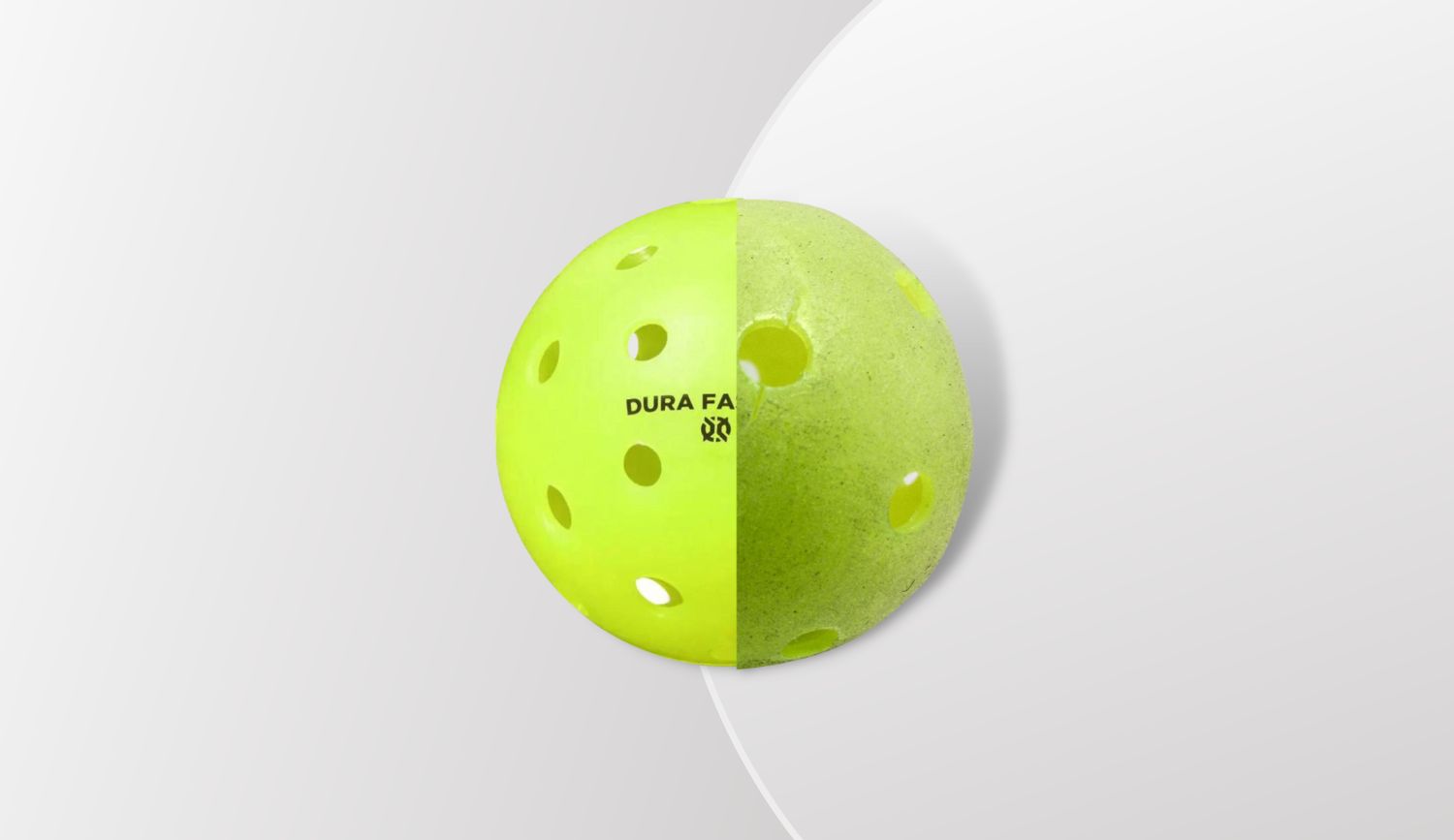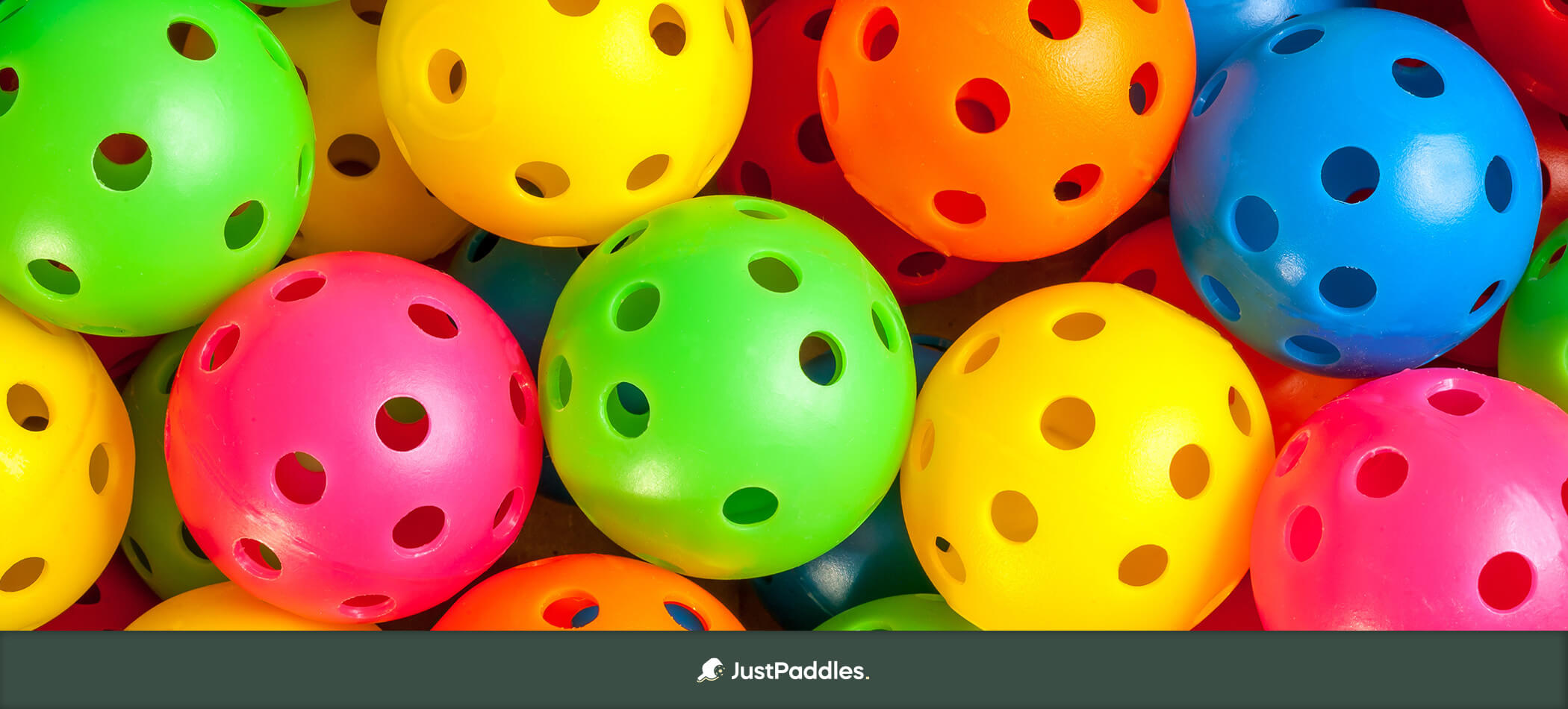Pickleballs can last for multiple months of consistent play, but may lose their bounce over time.
Factors Affecting The Lifespan Of Pickleballs
When it comes to determining how long pickleballs last, there are several factors that come into play. Understanding these factors can help you make informed choices when it comes to purchasing and maintaining your pickleballs. Let’s take a closer look at the key factors affecting the lifespan of pickleballs.
Material Used In Making Pickleballs
The material used in making pickleballs plays a crucial role in their durability. Most pickleballs are made of a combination of plastic and rubber. The quality and composition of these materials can vary, resulting in different levels of durability. High-quality pickleballs made with durable materials are likely to last longer compared to cheaper options.
Frequency Of Use
The frequency of use is another factor that affects the lifespan of pickleballs. The more often you play pickleball, the faster the balls will wear out. The constant impact and friction on the balls can cause them to lose their bounce and become less responsive over time. If you regularly engage in intense pickleball matches, you might need to replace your balls more frequently.
Playing Surface
The playing surface also influences how long pickleballs last. Different playing surfaces, such as indoor courts and outdoor courts, can have varying effects on the durability of the balls. Outdoor courts, for example, tend to be rougher and more abrasive, which can wear down the balls faster. Indoor courts, on the other hand, offer a smoother playing surface that is less likely to damage the balls. It’s important to consider the type of court you play on and choose pickleballs that are suitable for that specific surface.
Storage Conditions
The way pickleballs are stored can significantly impact their lifespan. Proper storage conditions can help preserve the integrity of the balls and prevent them from deteriorating prematurely. It is recommended to store pickleballs in a cool and dry place, away from direct sunlight and extreme temperatures. Additionally, keeping the balls in airtight containers or pickleball ball holders can help protect them from moisture and other elements that could affect their performance and longevity.
- Material used in making pickleballs
- Frequency of use
- Playing surface
- Storage conditions
Considering these factors can help you prolong the lifespan of your pickleballs, ensuring a consistent and enjoyable playing experience. By investing in high-quality pickleballs, being mindful of how often you play, selecting the appropriate balls for your court, and providing proper storage, you can maximize the lifespan of your pickleballs and get the most out of your games.
Signs Of Wear And Tear In Pickleballs
As pickleball enthusiasts, it’s important to understand how long our pickleballs can last before they start showing signs of wear and tear. Regular gameplay can take a toll on the balls, causing them to lose their bounce, develop cracks or splits on the surface, deform, or fade in color. Let’s dive deeper into these signs of wear and tear and how to identify them:
Loss Of Bounce
One common sign of wear in pickleballs is the loss of bounce. Over time, as the ball is hit repeatedly, the plastic and rubber material begin to break down, resulting in a decrease in elasticity. When a pickleball loses its bounce, it will not respond in the same lively manner as it did when it was new. To check for loss of bounce, gently drop the ball from a height of about three feet. If it doesn’t rebound well or feels flat, it’s time to consider replacing the pickleball for optimal gameplay.
Cracks Or Splits On The Surface
Another evident sign of wear and tear in pickleballs is the presence of cracks or splits on the surface. As the ball is struck with paddles and hits the ground repeatedly, it can develop hairline cracks or larger splits. These imperfections not only affect the stability and flight of the ball but can also cause injuries if sharp edges are exposed. Carefully examine the surface of the pickleball, paying close attention to any visible cracks or splits. If you notice any damage, it’s advisable to retire the ball to ensure a safe and enjoyable game.
Deformation Of The Ball
Pickleballs are susceptible to deformation as a result of continuous gameplay. Over time, the force and impact of shots can cause the ball to flatten or lose its round shape. To determine if a pickleball is deformed, gently spin it in the air using your hand. If the ball wobbles, feels uneven, or fails to maintain a steady rotation, it’s a clear indication that the ball has undergone deformation. Playing with a deformed pickleball can lead to inconsistent performance and may affect the fairness of the game.
Fading Of Color
Lastly, the fading of color in pickleballs can be an indicator of their aging. Exposure to sunlight, dirt, and moisture can cause the vibrant colors of pickleballs to fade over time. While the fading of color alone may not significantly affect gameplay, it serves as a visual cue that the balls have been in use for an extended period. It’s important to note that color fading is subjective and may vary depending on the brand and quality of the pickleballs.
Average Lifespan Of Pickleballs
Pickleballs are an essential component of the popular sport of pickleball, providing the necessary bounce and durability for a great game. However, many players often wonder about the average lifespan of pickleballs and how long they can expect their balls to last. In this article, we will explore the estimated lifespan of pickleballs, the different lifespans for indoor and outdoor balls, and important tips to prolong the lifespan of your pickleballs.
Estimate Based On Typical Usage
When it comes to the average lifespan of pickleballs, it is important to note that there is no definitive answer. The lifespan of a pickleball can vary depending on various factors such as usage, playing conditions, and the quality of the ball itself. Typically, pickleballs can last for several games or even months of consistent play before they begin to show signs of wear and tear.
However, it is essential to keep in mind that pickleballs will eventually lose their bounce and responsiveness over time. If you notice that the ball has slowed down significantly, lacks its initial “pop,” or does not respond as it did when it was new, it might be a good indication that it is time to replace the ball.
Different Lifespan For Indoor And Outdoor Pickleballs
The lifespan of pickleballs can also vary depending on whether they are used for indoor or outdoor play. Indoor pickleballs tend to have a longer lifespan compared to outdoor pickleballs due to the difference in playing surfaces and conditions. Indoor balls are made of a softer plastic material and are more resistant to wear from the playing surface. On the other hand, outdoor pickleballs are designed to withstand harsher conditions, including exposure to sunlight, wind, and harder playing surfaces. Therefore, outdoor pickleballs may wear out more quickly compared to their indoor counterparts.
Tips To Prolong The Lifespan Of Pickleballs
If you want to ensure that your pickleballs last as long as possible, here are some helpful tips:
- Store your pickleballs in a dry and cool place when not in use to prevent unnecessary exposure to extreme temperatures and high humidity.
- Avoid using worn-out balls or balls with visible signs of damage, as they can affect the gameplay and potentially cause injuries.
- Consider using an indoor-specific pickleball for indoor play and an outdoor-specific pickleball for outdoor play to maximize their durability.
- Regularly inspect your pickleballs for any signs of wear, including cracks, dents, or deformities. Replace any damaged balls promptly to ensure a consistent playing experience.
- Clean your pickleballs regularly with a damp cloth to remove dust, dirt, and debris that can accumulate during gameplay.
By following these tips, you can prolong the lifespan of your pickleballs and continue to enjoy a great game of pickleball for an extended period.
How To Determine When To Replace Pickleballs
As a pickleball player, keeping your equipment in optimal condition is essential for an enjoyable and competitive game. Pickleballs, in particular, can wear out over time due to regular use. But how do you know when it’s time to replace them? In this article, we will discuss some key indicators to help you determine when to replace your pickleballs.
Observe Changes In Performance
One of the first signs that your pickleballs may need replacing is a noticeable change in performance. If you find that the ball has slowed down significantly or doesn’t have the same “pop” as it did when it was new, it may be a sign that the ball has reached its end of life. Similarly, if the ball is not responding the way it used to, such as losing its spin or trajectory, it’s probably time to grab a new one.
Test The Ball’s Bounce
The bounce of a pickleball is another crucial factor to consider when determining if it’s time for a replacement. Over time, pickleballs can lose their bounce due to wear and tear. To test the ball’s bounce, simply drop it from a height of about waist level onto a hard surface. If the ball doesn’t bounce back as high as it used to, it’s a clear indication that the ball has lost its springiness and needs to be replaced.
Check For Cracks And Deformations
Regularly inspecting your pickleballs for cracks and deformations is important in maintaining their quality. Cracked or deformed balls not only affect the ball’s performance but can also pose safety risks. To check for cracks, run your fingers along the surface of the ball, feeling for any irregularities. If you notice any cracks or deformations, it’s time to retire the pickleball and invest in a new one.
Consider Overall Wear And Tear
Lastly, it’s essential to consider the overall wear and tear of your pickleballs. Signs of wear and tear can include scuff marks, discoloration, or rough patches on the surface. While some wear is inevitable, excessive wear can affect the ball’s performance and durability. If your pickleball shows significant signs of wear and tear, it’s best to replace it with a new one to ensure a consistent and fair game.
By observing changes in performance, testing the ball’s bounce, checking for cracks and deformations, and considering overall wear and tear, you can confidently determine when to replace your pickleballs. Remember, having well-maintained equipment not only enhances your gameplay but also ensures a safe and enjoyable experience on the pickleball court.
Recommendations For Choosing High-quality Pickleballs
When it comes to enjoying a game of pickleball, having high-quality pickleballs can significantly enhance your playing experience. So, how do you choose the best pickleballs? In this section, we will explore three key factors to consider: trusted brands and models, online reviews and recommendations, and tournament-grade vs recreational-grade pickleballs.
Trusted Brands And Models
Choosing pickleballs from trusted brands and models ensures that you are investing in quality and durability. These brands have a reputation for producing reliable pickleballs that can withstand intense gameplay. Here are some popular and trusted brands:
| Brand | Model |
|---|---|
| PCKL | Optic Speed Pickleballs |
| Onix | Fuse G2 |
| Dura | Fast 40 |
Online Reviews And Recommendations
Before purchasing pickleballs, it’s essential to read online reviews and recommendations from other players. This will give you valuable insights into the performance, durability, and overall quality of different brands and models. Look out for pickleballs that consistently receive positive feedback and have a large number of favorable reviews on reputable sources such as:
- Reddit pickleball communities
- Pickleball-related forums and discussion boards
- Sports equipment review websites
Tournament-grade Vs Recreational-grade Pickleballs
Another crucial factor to consider is whether you need tournament-grade or recreational-grade pickleballs. Tournament-grade pickleballs are designed for professional or competitive play and meet specific standards set by pickleball organizations. These pickleballs provide optimal bounce, durability, and consistency. On the other hand, recreational-grade pickleballs are more suitable for casual or recreational play and may not meet the same strict standards as tournament-grade ones. It’s important to choose the appropriate grade based on your playing style and level of competition.
By considering these recommendations, you can make an informed decision when purchasing high-quality pickleballs. Remember to prioritize trusted brands and models, read online reviews, and choose the right grade for your playing needs. Investing in quality pickleballs will ultimately enhance your pickleball experience and ensure long-lasting enjoyment on the court.

Credit: dashpickleball.com
Frequently Asked Questions Of How Long Does Pickleball Last
How Do You Know When To Replace Pickleballs?
Signs of replacing pickleballs include loss of speed, decreased pop, unresponsiveness, or deformation. Gently spinning the ball in the air can also indicate if it needs replacing. Pickleballs can lose bounce over time but can last several months with consistent play.
How Many Games Do Pickleballs Last?
On average, pickleballs can last for multiple months of consistent play before losing their bounce. However, if you notice a significant decrease in speed and response, or the ball looks deformed, it’s time to replace it.
Do Pickleballs Lose Their Bounce?
Pickleballs will lose their bounce over time, typically after several months of consistent play. There is no way to prevent this from happening as it is a natural occurrence. If you notice that the ball has slowed down significantly or doesn’t have the same “pop,” it is time to replace it.
How Many Sets Is A Pickleball Game?
A pickleball game consists of multiple sets.
Conclusion
To determine how long a pickleball lasts, various factors come into play. One important aspect is the ball’s bounce, which gradually diminishes over time. Although it may take several months for the ball to lose its bounce with consistent use, signs of wear include a significant decrease in speed and responsiveness.
To ensure optimum performance, it is recommended to replace the ball when these signs become evident. Ultimately, the lifespan of a pickleball depends on the frequency and intensity of gameplay. So, keep an eye out for the telltale signs and enjoy many rounds of pickleball!

